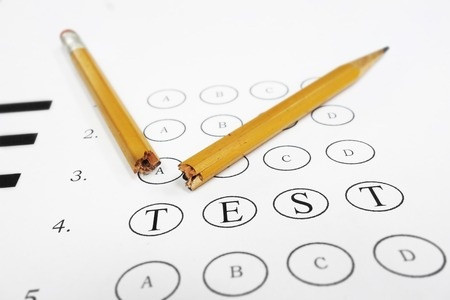【阅读素材】考托阅读背景材料之The roots of jazz
- 2014年09月01日16:30 来源:小站整理
- 参与(0) 阅读(3096)
在托福的备考过程中,对于阅读来说,单凭一些技巧是很难提升自己的托福阅读能力的,大量的练习还是必不可少的。这将对考生们打开思路、解答题目很有帮助,下面我们就为大家提供了The roots of jazz的阅读材料,希望能为大家的托福备考带来帮助。
The roots of jazz
The folk songs and plantation dance music of black Americans contributed much to early jazz. These forms of music occurred throughout the Southern United States during the late 1800's.
Ragtime, a musical style that influenced early jazz, emerged from the St. Louis, Mo., area in the late 1890's. It quickly became the most popular music style in the United States. Ragtime was an energetic and syncopated variety of music, primarily for the piano, that emphasized formal composition.
The blues is a form of music that has always been an important part of jazz. The blues was especially widespread in the American South. Its mournful scale and simple repeated harmonies helped shape the character of jazz. Jazz instrumentalists have long exploited the blues as a vehicle for improvisation.
Early jazz.
Fully developed jazz music probably originated in New Orleans at the beginning of the 1900's. New Orleans style jazz emerged from the city's own musical traditions of band music for black funeral processions and street parades. Today, this type of jazz is sometimes called classic jazz, traditional jazz, or Dixieland jazz. New Orleans was the musical home of the first notable players and composers of jazz, including cornetists Buddy Bolden and King Oliver, cornetist and trumpeter Louis Armstrong, saxophonist and clarinetist Sidney Bechet, and pianist Jelly Roll Morton.
Jazz soon spread from New Orleans to other parts of the country. Fate Marable led a New Orleans band that played on riverboats traveling up and down the Mississippi River. King Oliver migrated to Chicago, and Jelly Roll Morton performed throughout the United States. Five white musicians formed a band in New Orleans, played in Chicago, and traveled to New York City, calling themselves the Original Dixieland Jazz Band (the spelling was soon changed to "Jazz"). This group made the earliest jazz phonograph recordings in 1917. Mamie Smith recorded "Crazy Blues" in 1920, and recordings of ragtime, blues, and jazz of various kinds soon popularized the music to a large and eager public.
The 1920's
The 1920's have been called the golden age of jazz or the jazz age. Commercial radio stations, which first appeared in the 1920's, featured live performances by the growing number of jazz musicians. New Orleans; Memphis; St. Louis; Kansas City, Missouri; Chicago; Detroit; and New York City were all important centers of jazz.
A group of Midwest youths, many from Chicago's Austin High School, developed a type of improvisation and arrangement that became known as "Chicago style" jazz. These musicians included trumpeters Jimmy McPartland and Muggsy Spanier; cornetist Bix Beiderbecke; clarinetists Frank Teschemacher, Pee Wee Russell, Mezz Mezzrow, and Benny Goodman; saxophonists Frankie Trumbauer and Bud Freeman; drummers Dave Tough, George Wettling, and Gene Krupa; and guitarist Eddie Condon. They played harmonically inventive music, and the technical ability of some of the players, especially Goodman, was at a higher level than that of many earlier performers.
In New York City, James P. Johnson popularized a new musical style from ragtime called stride piano. In stride piano, the left hand plays alternating single notes and chords that move up and down the scale while the right hand plays solo melodies, accompanying rhythms, and interesting chordal passages. Johnson strongly influenced other jazz pianists, notably Count Basie, Duke Ellington, Art Tatum, Fats Waller, and Teddy Wilson.
Fletcher Henderson was the first major figure in big band jazz. In 1923, he became the first leader to organize a jazz band into sections of brass, reed, and rhythm instruments. His arranger, Don Redman, was the first to master the technique of scoring music for big bands. Various Henderson bands of the 1920's and 1930's included such great jazz instrumentalists as Louis Armstrong and saxophonists Benny Carter and Coleman Hawkins.






































